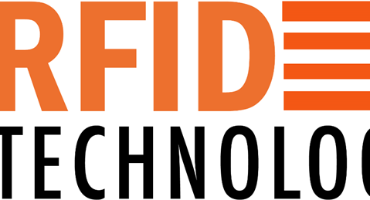RFID Adoption in Warehousing, Logistics & Distribution - In these environments, RFID technology is being adopted to streamline inventory control, improve order accuracy, enable faster throughput, and give real-time visibility into the movement of goods. Compared to barcode-only systems, RFID provides: Hands-free Fixed-Mount UHF RFID Readers — no need to line up each item with a RFID reader, Bulk reads — capture dozens or hundreds of RFID tags in seconds, Real-time data flow — inventory updates happen automatically and Greater automation — integrates with conveyor systems, robotics, and WMS/ERP platforms.
Key Hardware Considerations for RFID Installations
Implementing RFID in warehouse and distribution environments is not just about tags — the ecosystem of components must work together reliably in challenging, high-traffic, and sometimes harsh conditions.
RFID UHF Label Tags:
Type: Passive (no battery) or active (with battery for long range tracking).
Frequency: Typically UHF (Ultra High Frequency, ~860–960 MHz) for supply chain operations.
Durability: Must withstand temperature changes, vibration, dust, moisture, and potential impacts.
Attachment method: Adhesive, embedded in packaging, or encapsulated for reusable containers/pallets.
RFID UHF Readers:
Fixed-mounted UHF RFID Readers
Mounted at dock doors, conveyor portals, or choke points to capture tags automatically.
Need sufficient read range and ability to handle multiple tags simultaneously.
Mobile Handheld UHF RFID Readers
Used for cycle counts, exception handling, and spot checks.
Often combined with mobile computers for data entry and WMS integration.
Vehicle-Mounted UHF RFID Readers
Installed on forklifts to read tags as pallets are moved.
RFID UHF Antennas:
Directional vs. Omni-directional: Chosen based on coverage area and read zone control.
Placement: Critical to avoid “dead zones” and control unwanted reads from outside the intended area.
Gain & Polarisation: Must match the read range requirements and tag orientation in the warehouse.
RFID Edge Devices & Controllers:
RFID Portals / Gateways: Integrate readers, antennas, and sensors into a single checkpoint system.
Edge processors: Filter and preprocess data before sending it to the central system to reduce network load.
Network & Power Infrastructure:
PoE (Power over Ethernet): Simplifies installation of fixed readers/antennas.
Reliable connectivity: Wired is common for fixed readers; Wi-Fi or private 5G may be needed for mobile devices.
UPS or backup power: Ensures continuous operation during power fluctuations.
Integration with WMS/ERP:
While not hardware, successful RFID adoption depends on seamless integration into warehouse management systems, ERP, and IoT platforms so the data becomes actionable — enabling automatic receiving, location updates, replenishment triggers, and analytics.
Environmental & Operational Considerations:
Metal & liquids can interfere with RFID signals — requires special tag types or reader placement strategies.
Read range tuning is essential to avoid reading tags from unintended locations.
Scalability — hardware choices should allow expansion as operations grow or change.


